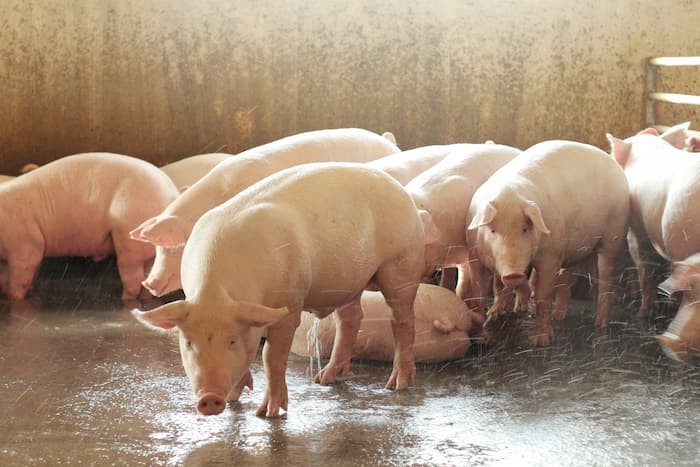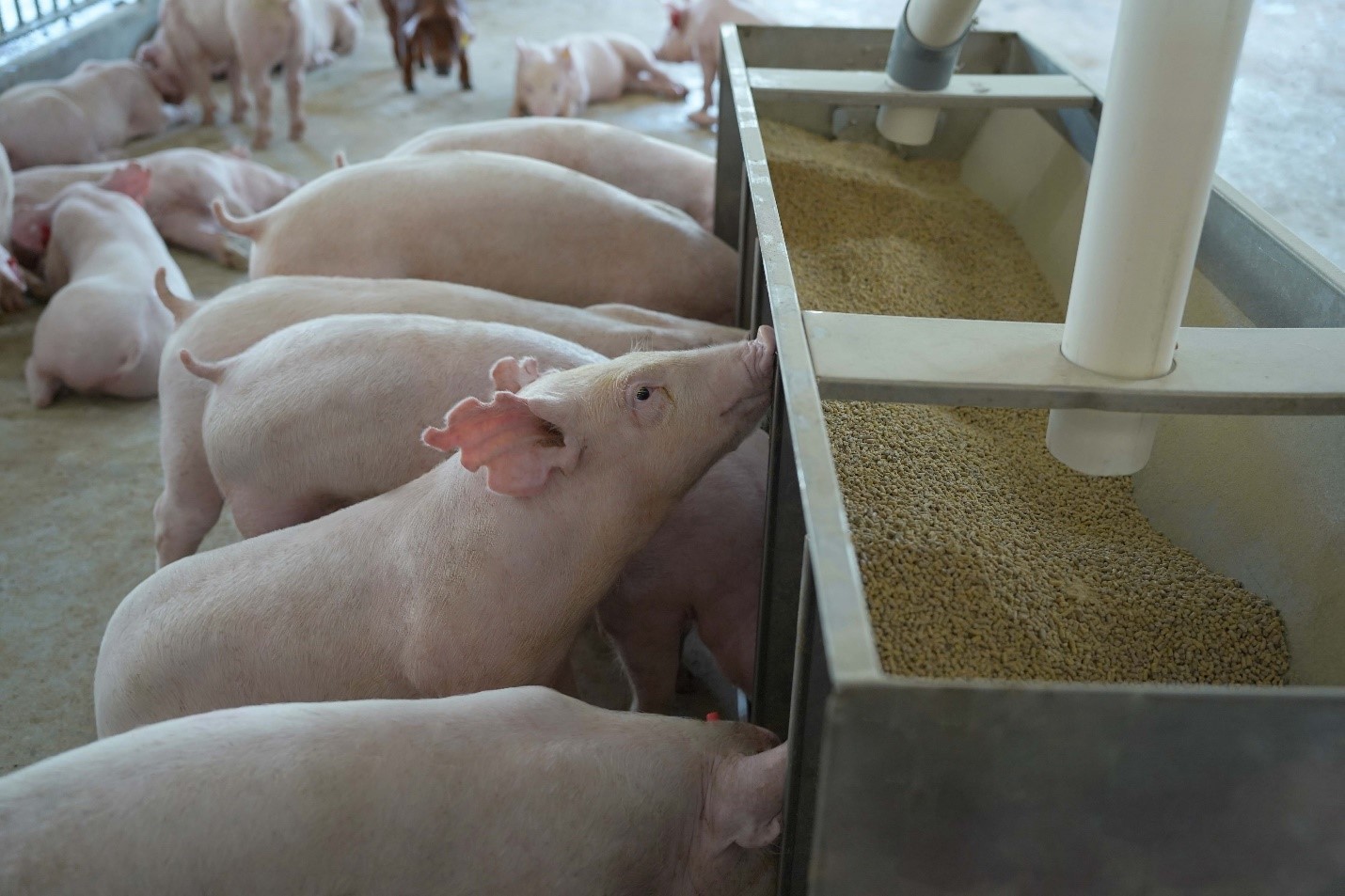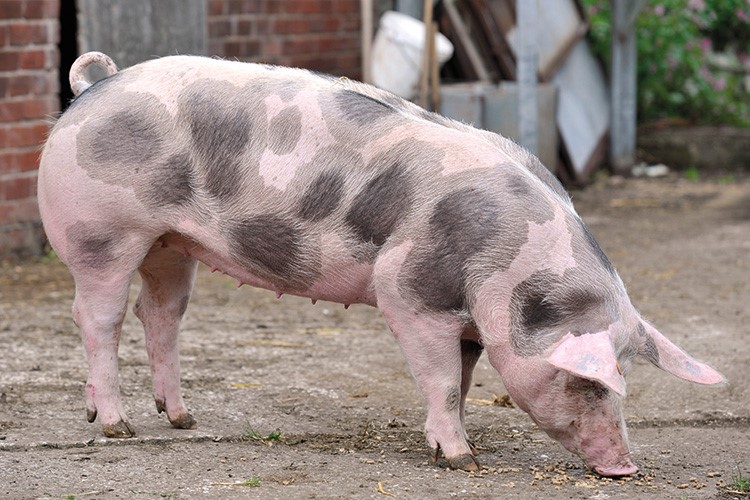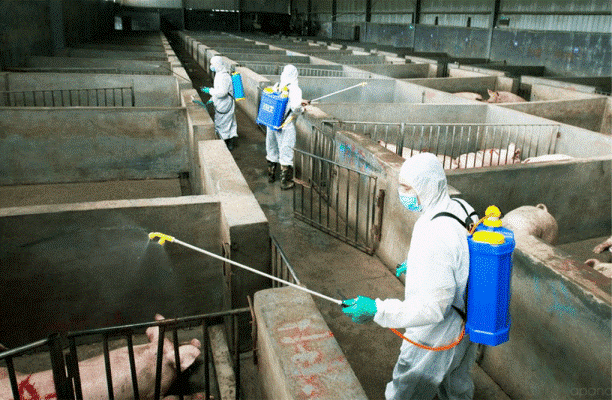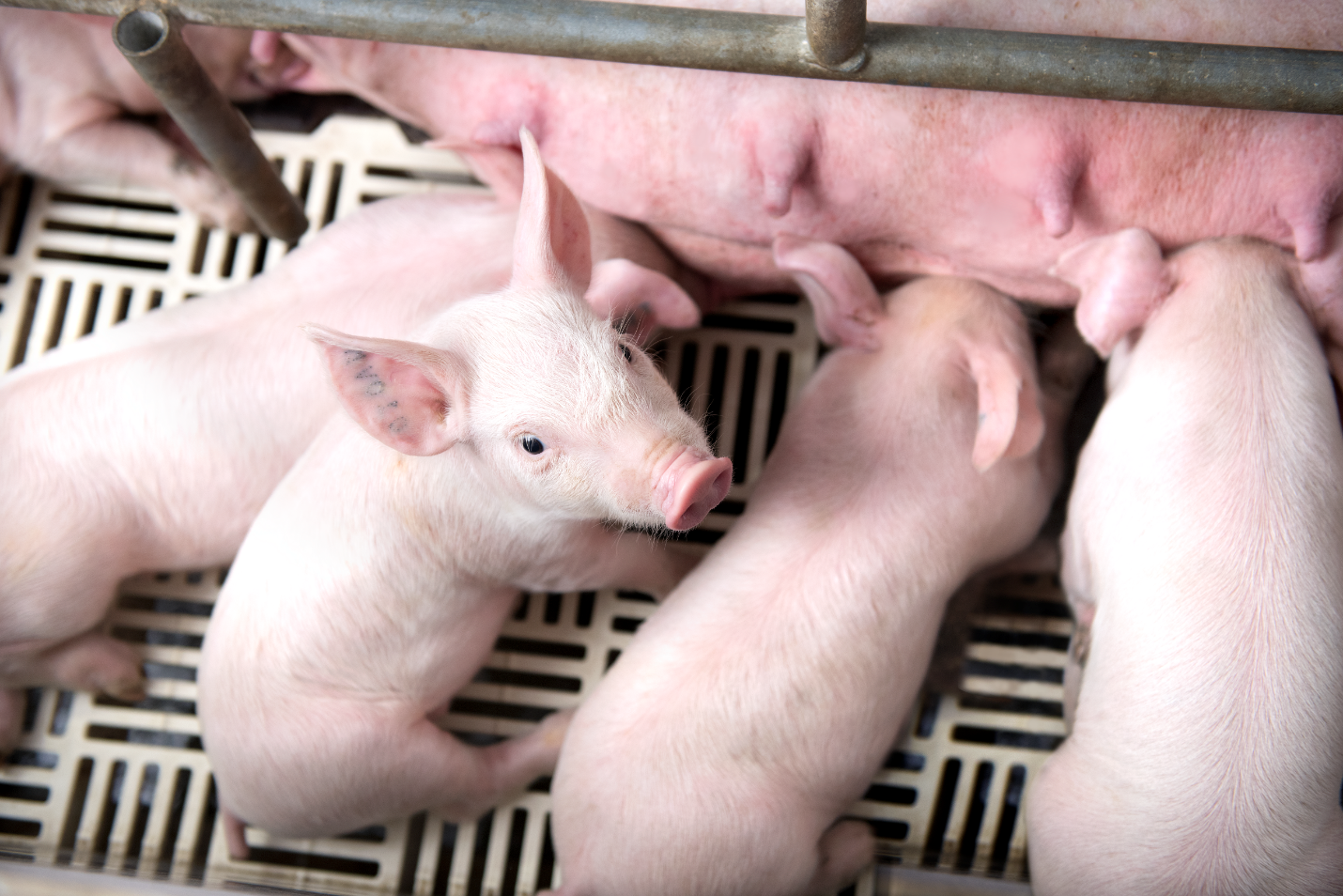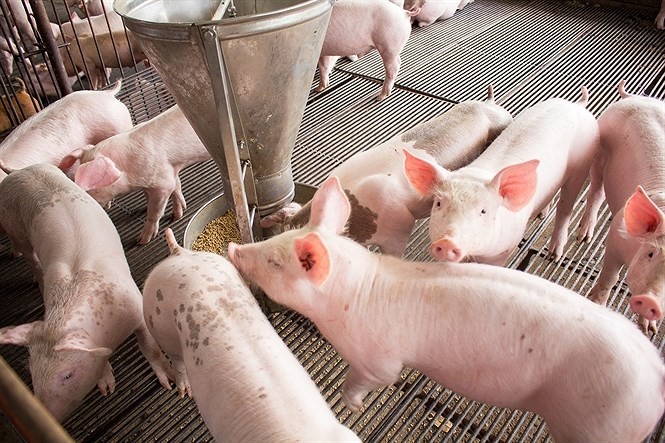SWINE
Swine Paratyphoid – Understanding for Effective Prevention and Treatment
In pig farming, diseases are the main cause of reduced productivity and serious economic losses. Among them, swine paratyphoid is one of the most dangerous infectious diseases, often breaking out rapidly and being difficult to control. During pig production, many farmers have experienced prolonged diarrhea, high fever, anorexia, and mass mortality in their herds, especially in post-weaning piglets. These symptoms are often mistaken for classical swine fever or pasteurellosis; however, in reality, they may indicate swine paratyphoid – a highly contagious disease that can cause severe damage to pig herds if not detected and treated promptly. 1. CAUSE Swine paratyphoid..
Mycoplasma suis Infection in Swine
Mycoplasma suis is a hemotrophic bacterium parasitizing erythrocytes, adversely affecting swine health and causing considerable economic losses. The disease tends to flare up severely when pigs are subjected to stress, abrupt weather changes, or concurrent infections. In modern swine production, although not as prevalent as African swine fever (ASF) or Porcine Reproductive and Respiratory Syndrome (PRRS), Mycoplasma suis infection silently reduces herd productivity and profitability. This pathogen induces anemia, stunted growth, poor weight gain, and in severe cases, sudden death, making it a growing concern in current swine herds. 1. CAUSES The disease is caused by Mycoplasma suis, a wall-less..
Top 5 Most Productive Pig Breeds – High Economic Efficiency
In the swine industry, breeding stock plays a crucial role, being the key factor that determines productivity and profitability. Which pig breeds currently rank highest in terms of improving economic efficiency? 1. LANDRACE PIG The Landrace is a high-yield pig breed originating from Denmark and is now widely raised in many countries. This breed has excellent reproductive capacity, prolificacy, good growth performance, efficient feed conversion, high carcass yield, strong adaptability, and good disease resistance. Statistics show that within one year, a Landrace sow can produce 1.8 to 2 litters, with each litter ranging from 10–12 piglets. Image of Landrace pigs..
Mange In Pigs
Mange is a common disease in pigs, but if you are careless, it can spread rapidly and negatively affect the entire herd. Therefore, early recognition and proper prevention and treatment methods are essential to keep your pigs healthy. It is not uncommon to see pigs developing red rashes on their skin. However, there are many possible causes for skin lesions, resulting from various diseases. This makes it difficult for farmers to choose the correct and effective treatment. To determine the cause of skin irritation in pigs, the origin of the disease must be identified. One of the many conditions causing..
Heat Stress Alert – Sudden Death in Pigs During Summer
During the summer, many pig farms are struggling as pigs show signs of anorexia, heavy breathing, convulsions, diarrhea, and even sudden death without an apparent cause. The underlying issue is heat stress and electrolyte depletion—conditions that may seem minor but can fatally affect the entire herd if not addressed promptly. Prolonged heat not only impacts humans but also poses severe consequences for livestock, especially pigs. When temperatures rise, the risk of heat stress in pigs increases rapidly and unexpectedly, resulting in significant economic losses for farmers. Early detection and timely intervention are critical to protecting livestock during extreme summer heat...
5 Measures to Help Pig Farms Escape African Swine Fever Outbreaks
African swine fever (ASF) causes severe economic losses. To protect pig herds from this dangerous disease, it is essential to proactively implement strict and science-based preventive measures. African swine fever (ASF) is a highly contagious and deadly viral disease affecting pigs, causing severe economic losses in the livestock industry. To protect herds effectively, strict biosecurity measures and proactive management practices must be applied. The following guidelines provide practical steps for farmers and veterinarians to prevent and control ASF outbreaks. 1. STRICT BIOSECURITY MEASURES – Do not allow strangers or unauthorized vehicles to enter the farm. Disinfect and quarantine before entry...
Techniques To Reduce Post-Weaning Losses In Piglets – Secrets To Keep The Herd Healthy
The post-weaning period is one of the most critical and vulnerable stages in pig production. Without proper management, piglets are at high risk of disease, stress, and mortality, leading to significant economic losses. As experienced pig farmers know, the post-weaning phase is a major shock for piglets: Sudden weaning, separation from the sow, changes in living environment and feed, coupled with an immature immune system, make piglets vulnerable. As a result, piglets are easily stressed and prone to diseases such as diarrhea, pneumonia, enteritis, especially from E. coli, Clostridium, PRRS, PCV2, etc. Without proper care, mortality can reach 10–30%, increasing..
Mistakes In Raising Pigs That Make You Lose Your Entire Pig Crop
Pig farming, although highly profitable, also carries many risks. Many failures do not come from major epidemics but from small but dangerous mistakes. Pig farming can be highly profitable, but it also comes with considerable risks. Many farmers have made fortunes after just one successful cycle, while others have gone into debt or even sold their land due to massive losses when entire herds perished. In most cases, failure is not due to external factors but rather seemingly minor mistakes that can have devastating consequences. Below are the 5 most serious and common mistakes that can cause total losses if..
5 Tips for Increasing Sow Productivity
In pig farming, sows that produce large, healthy litters not only increase the number of piglets but also help reduce input costs and shorten the production cycle. So, how can sows achieve optimal reproductive performance? Do you want your sows to produce large, healthy litters and maximize profits every year? Discover these 5 golden secrets to help your sows farrow 14 to 20 piglets per litter. 1. SELECT THE RIGHT BREED The first key is to choose high-prolific sow breeds. Prioritize breeds such as Yorkshire, Landrace, and Duroc – all renowned for their prolificacy, often farrowing 14 to 20 piglets..
Symptoms And Prevention Measures For E.Coli In Piglet
Understanding the causes, symptoms, and prevention methods for E.Coli infections in piglets is crucial for maintaining a healthy and productive herd. White diarrhea in piglets, commonly caused by E.Coli bacteria, is one of the most prevalent and dangerous diseases in pig farming today. It severely affects the health of piglets and leads to significant economic losses for farmers. 1. CHARACTERISTICS AND CAUSES OF THE DISEASE – Ecoli in piglet is very common in pig farming, caused by E.Coli bacteria, related to changing weather conditions (especially cold weather) and veterinary hygiene in farming. – Piglets from 2-3 hours after birth to..

